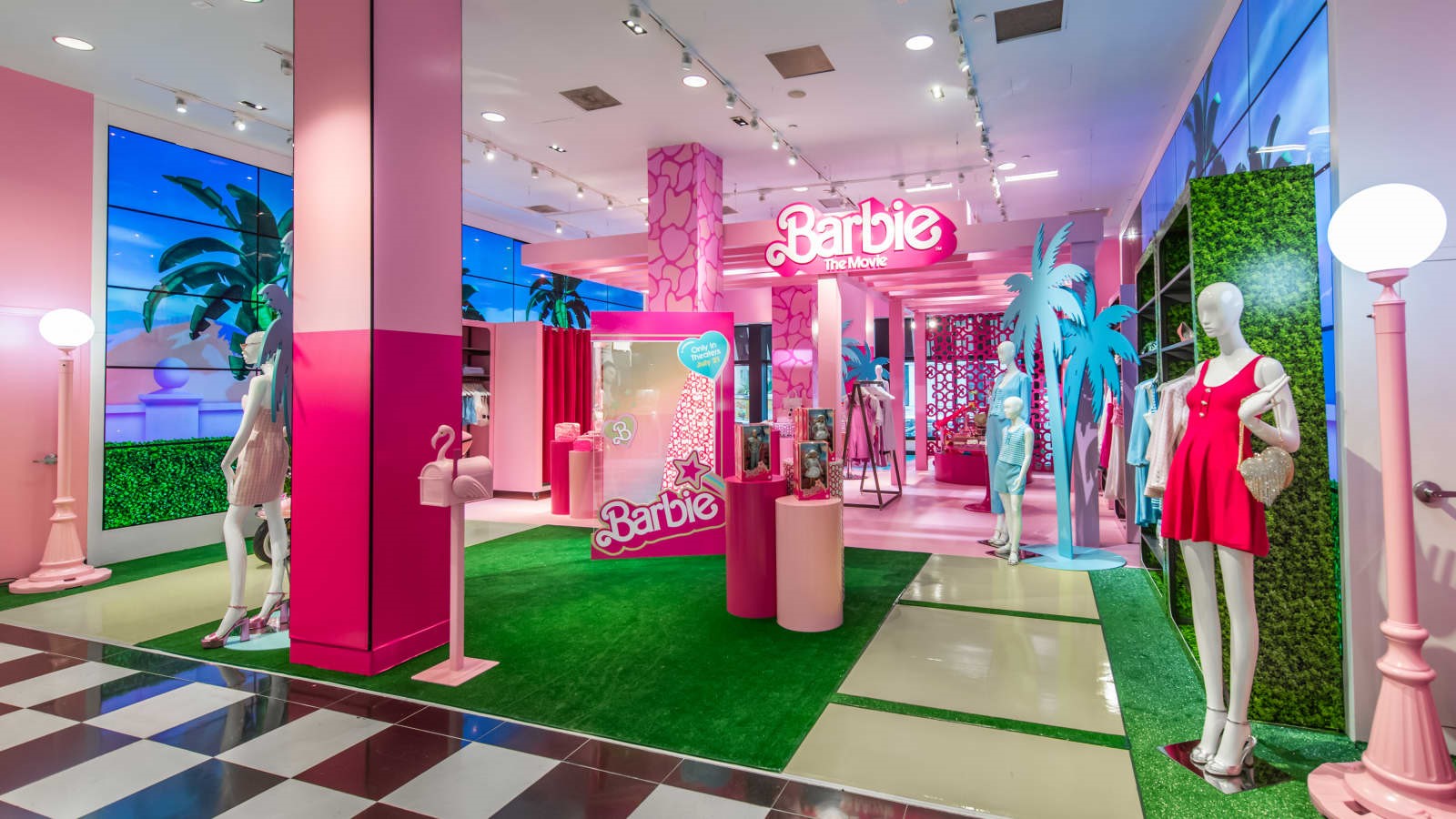Brands and the Unique Ways They Reach Their Target Audience

In an ever-evolving landscape of consumer engagement, brands are constantly innovating to connect with their target audience in meaningful ways.
From collaborative partnerships to digital transformations, the strategies employed by brands are diverse and dynamic.
This article explores the multifaceted approaches adopted by brands to engage with their audience, highlighting prominent examples, and shedding light on the evolving dynamics of consumer interaction in the modern era.
Key Points
Incorporating emerging technologies like augmented reality (AR) and virtual reality (VR) into marketing strategies is increasingly common among brands, as seen by IKEA's utilisation of AR in its shopping app to enrich consumer engagement both online and offline.
Brands are fostering a sense of community and brand advocacy by encouraging user participation through campaigns like GoPro's #GoProChallenge, which not only generates user-generated content but also strengthens brand loyalty and connection.
Social media platforms serve as a vehicle for brands to showcase authenticity and transparency, fostering trust with their audience through behind-the-scenes insights and open responses to feedback, as demonstrated by Wendy's clever and interactive Twitter presence.
Brands are adopting personalised experiences and niche targeting to cater to individual preferences, as seen in Coca-Cola's "Share a Coke" campaign, which fosters a sense of connection and ownership among consumers through personalised product offerings.
Ways That Brands Are Engaging With Their Target Audience
Forming Various Collaborations
With Other Brands
One prominent strategy employed by brands is forming collaborative partnerships.
Mattel, the iconic toy manufacturer behind Barbie, is a prime example. To generate excitement around the release of the Barbie movie, Mattel orchestrated a collaborative effort with retail giants including Gap, Aldo, Forever 21, Primark, Hot Topic, and Spirit Halloween.
This partnership not only broadened their content approach but also created a buzz around the movie through various promotional initiatives.
Bloomingdale’s, a renowned department store, took a unique approach by teaming up with its Aqua clothing brand and Barbie. This collaboration manifested as an exclusive pop-up shop, both online and in physical stores.
The endeavour featured captivating window displays, a dedicated beauty-styling studio, and an array of special Barbie-themed offerings, showcasing the creativity and innovation that can result from such alliances.

Source: CNBC
With Influencers
With influencers becoming increasingly impactful in shaping consumer behaviour, brands are strategically leveraging these individuals to engage with their target audience on a more personal level. Collaborating with influencers allows brands to tap into established communities, build trust, and drive sales in a more authentic manner.
Influencer collaborations come in various forms, ranging from sponsored content on social media platforms to co-created products and experiences. These partnerships often involve influencers sharing their genuine experiences with the brand's products or services, and with that providing valuable endorsements that resonate with their followers.
Engaging a Certain Demographic
In recent years, we’ve witnessed a fascinating trend in Hollywood, where iconic brands and intellectual properties have taken centre stage on the silver screen.
Barbie, for instance, serves as a prime illustration of this phenomenon, with major studios forging partnerships to transform beloved products into blockbuster movies. However, Barbie is just the tip of the iceberg — other notable brands such as Nike, Tetris, Super Mario Bros., and even Hot Cheetos have all captured the attention of Hollywood’s creative minds.
This strategic move by studios reflects a keen desire to connect with the millennial audience, a generation that grew up alongside these brands and now wields substantial purchasing power.
Claire’s, the iconic accessories chain with a 62-year history, decided to take a bit different approach and is in the midst of a transformative journey led by Kristin Patrick, their EVP and Chief Marketing Officer.
Rather than just being a brick-and-mortar presence, the brand has strategically partnered with fashion designer Nicola Formachetti as Creative Director, making waves at Paris Fashion Week and expanding its reach into the metaverse. This tactical decision aligns with the evolving retail media landscape, where brands are not only embracing modernisation but also tapping into their rich heritage.
Through initiatives like the College Creators program, the brand is actively engaging Gen Z talent, creating a dynamic connection with a demographic that plays a pivotal role in shaping the retail landscape.
Experiential Marketing
Brands are creating immersive experiences to engage with consumers offline. Nike's stores, mainly the "House of Innovation" ones but also other locations, provide customers with interactive experiences, such as personalised product customisation and virtual reality simulations, enhancing brand affinity and driving foot traffic.

Source: YouTube
Accommodating Customer Needs
The shift towards enhancing shopper convenience and leveraging technology is not only reshaping traditional retail experiences, but also revolutionising the way retailers utilise their online storefronts.
This transformation has been sparked by various factors, including the increasing demand for seamless shopping experiences and the need for contactless solutions amid the COVID-19 pandemic.
In response to these dynamics, retailers are reimagining their digital presence to better engage with customers and provide innovative solutions that align with evolving consumer preferences.
From augmented reality (AR) in virtual try-on experiences to contactless shopping solutions, retailers are embracing innovation to accommodate the shift in how consumers make purchases.
One notable example of this transformation is IKEA. Recognising the changing consumer behaviour and the growing importance of technology in the retail experience, IKEA has integrated AR into its shopping journey.
Through the IKEA Place app, customers can virtually place furniture and home decor items in their own living spaces using their smartphones. This feature provides consumers with an opportunity to try out items that are available for sale, helping them with making up their minds.
Not only is it a form of assistance, but in a way it also acts as an ad, considering how engaging it is for the buyer.

Source: Digiday
Social Media
One of the key strategies employed by brands on social media is to showcase authenticity and transparency.
This involves sharing behind-the-scenes glimpses into their operations, introducing the faces behind the brand, and addressing both positive and negative feedback openly. By being genuine, brands can foster trust and credibility among their audience.
Brands are also leveraging the power of social media platforms to connect with their audience on a personal level. For instance, Wendy's Twitter account is known for its witty banter and engaging responses, effectively building a loyal following and increasing brand visibility.
Content Marketing
Content marketing has become a cornerstone strategy for brands aiming to engage with their target audience in meaningful ways.
Rather than relying solely on traditional advertising methods, many companies are now focusing on creating valuable, informative, or entertaining content that resonates with their audience's interests and needs.
One standout example of successful content marketing is Red Bull's approach. Renowned for its adventurous and energetic brand image, Red Bull strategically invests in sponsoring extreme sports events and producing adrenaline-pumping videos.
By aligning itself with activities like skydiving, snowboarding, and Formula 1 racing, Red Bull effectively targets thrill-seekers and adventure enthusiasts.

Source: YouTube
User-Generated Content Campaigns
Brands are encouraging their customers to create and share content related to their products. GoPro's #GoProChallenge encourages users to submit their best action-packed videos captured with GoPro cameras, fostering a sense of community among users and showcasing the versatility of the product.
Personalisation and Customisation
Brands are offering personalised experiences to cater to individual preferences. Coca-Cola's "Share a Coke" campaign, which allows customers to personalise Coke bottles with their names, fosters a sense of connection and ownership, driving engagement and loyalty.
Shift your business forward
Get in contact with us to learn more about how our IT services can add value to your business.

